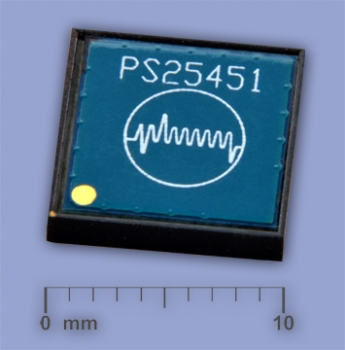- Ultra high effective input resistance, typically 20G.
- Effective input capacitance as low as 15pF.
- Upper 3dB point typically 10kHz.
- Operates with bipolar power supply from ±2.4V to ±5.5V.
- Sensors supplied in a custom package with exposed pins for surface mount assembly.

Plessey Semiconductors has said that its EPIC sensor will now sell for less than a dollar in high volume consumer applications.
The company has cost-reduced it electrometer sensing technology with a new electrode design to replace the expensive titanium dioxide electrodes currently used for medical applications.
“The new electrode design for the PS25451 is formed on the copper track of the circuit board that is then covered by the normal protective resist,” said Dr. Keith Strickland, Plessey’s technology director.
The PS25451 device is a non-contact, solid state electric potential sensor that can be used for proximity switching of lighting, gesture-based remote control of interactive toys and presence detection for security/alarm systems.
The EPIC sensor technology works by measuring tiny changes in an electric field in a similar way to a magnetometer detecting changes in a magnetic field even at a distance and through clothing.
A feature of the technique is that it can be used for security motion sensors and non-contact electrical switches as well as medical applications detecting heart beats, nerve and muscle activity either by dry contact (i.e. no gels required) or contactless.
For more read: Plessey’s no-contact heart sensor costs less
